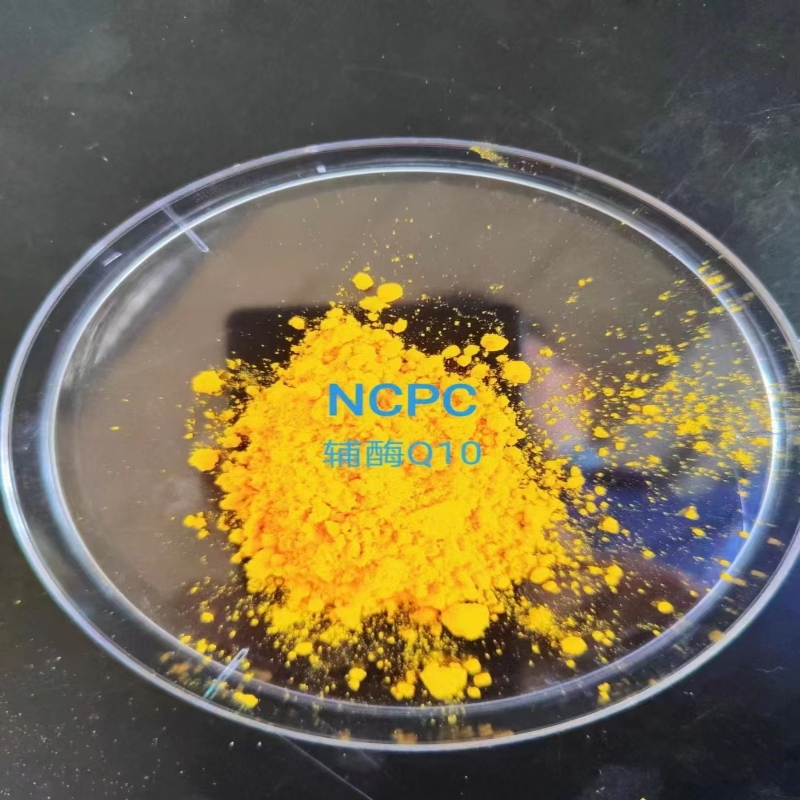Human face "animal" heart era is coming? On xenotransplantation
-
Last Update: 2015-12-04
-
Source: Internet
-
Author: User
Search more information of high quality chemicals, good prices and reliable suppliers, visit
www.echemi.com
In early October 2015, a new issue of science, the world's top scientific journal, published an important research paper By using CRISPR / cas9 gene editing technology, George church, a scientist from Harvard University in the United States, successfully suppressed the gene of porcine endogenous retrovirus (PERV) in pigs, which greatly promoted the research process of xenotransplantation from pigs The masses of the people have said that there are a lot of new words in the news Can they speak human words? Well, let's talk about it one by one Let's take a look at the "xenotransplantation" which is easy to understand What is xenotransplantation? Xenotransplantation is the transplantation of organs or tissues from one species to another As we all know, the supply of organs from human beings is in a serious state of "short supply" Because of the influence of traditional concepts, the organ donation rate of our country is famous low among the major countries, which makes the shortage of transplanted organs worse, and further leads to various social problems such as organ black market purchase and sale However, organ transplantation is still the final solution for many malignant diseases In the face of this dilemma, some intelligent people have come up with a good idea: since human organs are hard to find, can we replace them with organs of other animals? This is not the end of the world It should be noted that all creatures on earth have evolved from one family, and have different degrees of consistency in many basic physiological, biochemical and genetic mechanisms But in the Mammalia, there is no essential difference in the function and structure of many organs among different species In this way, cross species organ transplantation seems to be necessary in physiology and anatomy However, the specific performance and size of organs need to be considered Although the primate compatriots are the closest to human beings, most of them are too small for their organs to meet the needs of human metabolism Chimpanzees, bonobos, gorillas, orangutans and other large anthropoid apes are endangered rare animals, and their status and dignity cannot be moved at all Since Sun monkey, the "eldest senior brother", can't count on it, he has to bother pig Bajie, the "second senior brother", to sacrifice Although in classification, pig and human are one of Artiodactyla and the other is primate, which are quite different, but from the external indicators of body shape, food quality and metabolism level, they are generally close to human beings Some organs of pig are basically at the same level with human beings from the perspective of "performance parameters" In addition, pigs are easy to be targeted breeding and large-scale reproduction, which is obviously a good potential source of organ transplantation So far, however, it's still a "potential" source What's the problem? Why hasn't "potential" organ transplantation been "corrected"? The answer lies at a more microscopic cellular and molecular level Even if the understanding of organ transplantation is limited to the "blood exchange" of leukemia in TV series, the biggest threshold of organ transplantation is "antigen matching" The essence of antigen matching is the rejection of foreign body by immune system In normal times, this function is the great wall of steel to protect the health of the body; but in organ transplantation, the rejection attack of the immune system can make foreign organs lose function in a few minutes The main criterion that determines the immune system's judgment of "close relationship" is the type of surface antigen of foreign cells, and the higher the similarity with the surface antigen of the body itself, the safer it is In fact, the familiar "blood group matching" in blood transfusion is an extremely simple antigen matching Generally, only a few kinds of red blood cell surface antigens such as ABO and Rh are considered When transplanting large organs, because of the variety of cells involved, the matching will become extremely complex To find qualified donors in the vast sea of people is like looking for needles in a haystack Of course, these problems can be alleviated to a certain extent by special immunosuppressants, but the difference between pigs and people is not comparable between people after all, so it is difficult to directly complete such cross species transplantation by immunosuppressants alone So far, the immune rejection of xenotransplantation is a very difficult problem Through genetic engineering, it has been a big dream of life science and medicine to cultivate "omnipotent pigs" that can provide organs to patients with any immune background at will without immune recognition obstacles In the process of research, scientists also found another more difficult problem, which is the porcine endogenous retrovirus (PERV) mentioned above What is endogenous retrovirus? All viruses, whose special skills are to infect host cells, insert their own gene fragments into the genes of host cells in various ways, and then use their own genes as the blueprint, and use host cells to replicate themselves to infect more cells, and so on The common cold virus, as we all know, is such a toss up of the upper respiratory tract Naturally, those who win the fight will inevitably run into tears But some viruses have opened up a more "gentle" way out of the "extensive" mode of infection represented by the cold virus When they insert their genes into the host cell, they will not act recklessly, but they will copy in a low-key way along with the "ride" of gene replication when the host cell divides, and only appear in the state of complete virus particles when necessary Obviously, this way is less harmful to the host Although it does not erupt as quickly as the extensive way, it is better than the thin water and long flow It belongs to a more stable "long-term investment" In general, these "mild" viruses are only a few of the hundreds of billions of cells in the infected organism, and will eventually fall apart with the death of the infected individual But if the virus happens to infect the germ cells or even the fertilized eggs, and it develops smoothly into a complete individual, then every cell in the individual has the gene inserted by the virus If the individuals with virus genes grow up and propagate healthily, they will eventually form a whole population or even species with virus genes! This extremely dark strategy is the real killer of mild virus The long-term goal is to catch big fish At this time, these viruses can already be called "endogenous viruses", and become a part of the natural existence of the gene pool of the species, and the host will win and lose In this way, scientists can artificially modify viruses or free gene fragments to transfer various genes into cells, so as to artificially create new varieties containing specific foreign genes, which is called transgenic technology Nowadays, the controversial "genetically modified crops" are its typical applications But more sinister results are behind us - many species, including humans, are "lurking" by endogenous viruses! Yes, we are all natural genetically modified organisms! After careful research, scientists found that up to 8% of the genes in the human genome are derived from the "immigrants" of the virus, and many of them play an important role in the body They are not the incompetent people who "eat, drink or scratch" In April this year, a Stanford University study found that endogenous viruses may significantly affect the further division and development of embryonic stem cells in the critical period of early embryonic development, which is of great significance to human development The second senior brother, who was also a mammal, was not spared Porcine endogenous retrovirus (PERV) is a kind of normal virus in pigs And as in the case of human, the gene of porcine endogenous retrovirus is deeply rooted in the gene pool of pig population, and may play an important role, so it can not be simply removed by routine treatment of organs or whole pigs In the further study of transplantation, it was found that the virus had different degree of damage to the transplant recipients after it was transplanted into other experimental animals For humans, although it is not possible to have human trials for the time being, the risk is still cloudy - porcine endogenous retrovirus (PERV) in pig organs may be harmful to health after transplantation into humans This is a problem In this case, can we use genetic engineering to "treat people in the same way"? CRISPR / cas9 gene editing technology has tried various methods to precisely hit the researchers of PERV, but the virus gene is widely copied in all parts of the gene library, and it is easy to "delete" a piece of its brain and hurt the innocent For the whole gene library, it is also broken In addition, the traditional method of gene knockout is complex, needs a long time, and is not efficient enough At this time, the scientific research community urgently needs a method that can edit genes accurately and conveniently With the emergence of CRISPR / cas9, the best gene editing technology, everything has changed CRISPR / cas9 technology is simply to let cas9 endonuclease, which has the ability to cut DNA chain, precisely cut the gene segment at a specific position under the guidance of guided RNA segment, so as to artificially make gene mutation or even inactivation, and then add new gene segment at the vacancy, and edit and modify gene sequence manually Moreover, the method is more convenient and efficient, and the success rate is higher It can be said that it is a new cutting-edge technology in the whole genetic engineering field With such a flexible, fast, increasable and reducible gene editing artifact, scientists have finally focused on the pig endogenous retrovirus, which has always been an eyesore Eventually, researchers at Harvard University targeted a key gene involved in retroviral infection of cells If the gene is absent, the porcine endogenous retrovirus can no longer infect the cells of the recipient After targeting specific genes, under the extensive and precise attack of CRISPR / cas9 technology, the virus gene with a large number of copies in the pig gene bank was finally eliminated completely Therefore, the virus's infection ability was greatly damaged, and it almost no longer had the ability to infect, and there was no harm to human body Although this progress is important, there are still many difficulties waiting for the scientific community to overcome one by one on the research road of xenotransplantation At present, the research progress has not reached the level that pig organs can successfully replace human organs, "human face and animal heart" is only a scientific fantasy Maybe one day in the future, when these technical problems are solved one after another under the new scientific discoveries, we will no longer have to suffer for the lack of organ sources, and pigs will also become "divine beasts" to protect human health from simple food (BIOON Com)
This article is an English version of an article which is originally in the Chinese language on echemi.com and is provided for information purposes only.
This website makes no representation or warranty of any kind, either expressed or implied, as to the accuracy, completeness ownership or reliability of
the article or any translations thereof. If you have any concerns or complaints relating to the article, please send an email, providing a detailed
description of the concern or complaint, to
service@echemi.com. A staff member will contact you within 5 working days. Once verified, infringing content
will be removed immediately.







